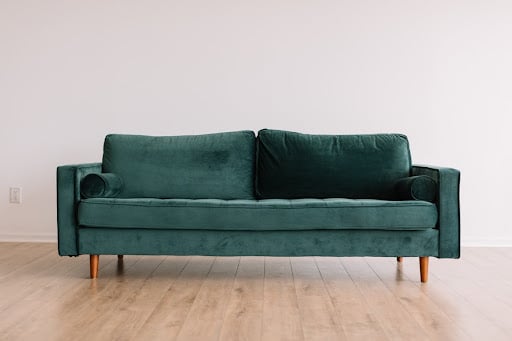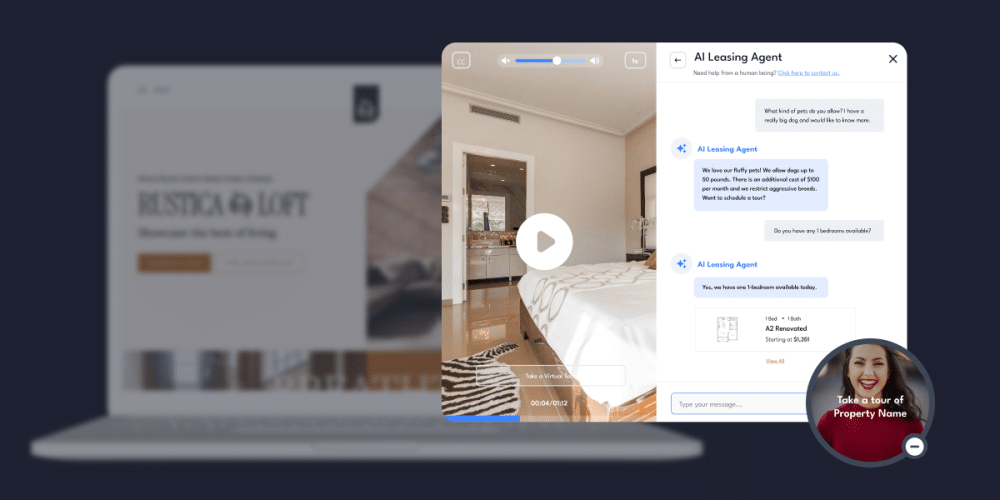Are Furniture Protection Plans Worth It?
Do you want a furniture protection plan? Are furniture protection plans worth it? Or are they a gimmick and a waste of money?

If you rent out furnished apartments, condos, or houses, then you’ve heard this one more than once:
Do you want a furniture protection plan?
These plans act like insurance, protecting you from unexpected furniture damage that takes a toll on your investment.
Of course, they don’t come for free.
Sure, most expensive pieces of furniture come with a warranty. But these warranties are very selective in what they cover (as you’re about to learn). Plus, they tend only to cover manufacturer defects.
They don’t usually cover damage done to the furniture by renters, pets, or kids.
So here’s the question:
Are furniture protection plans worth it?
Or are they a gimmick and a waste of money?
Well, people have opposing viewpoints on this. So we decided to go deep into the topic to determine the truth.
Here’s everything you need to know about furniture protection plans.
We’ll also discuss whether they may be a worthwhile investment for you — someone who furnishes apartments and rents them out.
Furniture Protection Plans Have Their Perks

Hey, accidents happen.
If you have kids, pets, or a lot of traffic coming into and out of your house or apartment, it may pay to grab the extended warranty or protection plan.
These plans may also be helpful if you’re renting out your own furnished space on Airbnb.
With some general exceptions, the basic concept behind a furniture protection plan is good.
In fact, there are five situations where an extended furniture manufacturer’s warranty or protection plan from the furniture store is a good idea. That’s especially true when buying a recliner, a sectional, a bed, or any other type of home furnishings for your rental.
These are the ‘pros’ of furniture protection plans.
1. If You Plan to Allow Pets
Do you plan to allow people to bring pets into your furnished rental?
If so, there’s a good chance your furniture will suffer more than the normal amount of wear and tear.
Pets can be rough on new furniture.
They can chew up dining room chair legs, cause rips in the fabric, pull out the quilting in your sectional, destroy upholstery, and more.
Pet damage is no small detail. And it can cost you a lot of money if you don’t protect yourself.
This is one of the best reasons to consider getting a retailer’s warranty or furniture protection plan for your new furniture.
2. If You Plan to Rent to Families with Children
There’s always the possibility that your renters will have children.
And children can be rough on new furniture as well.
They can spill juice on living room couches, draw on dining tables, and wear down furniture more expected with “normal use.”
Extended furniture warranties and protection plans can be an excellent investment in any unit where children live.
3. If You’re Buying Expensive Furniture
Furniture store salespeople love to sell you on the good points of buying more expensive furniture.
And to their point, there are a lot of great benefits to buying the ‘good’ stuff.
Case in point, expensive furniture generally lasts longer, is higher in quality, and looks great.
Placing high-end furniture in a furnished rental can also help you increase the odds of renting it out. Plus, it’ll earn you some better reviews from renters who pass through and choose your lodging option when they need a place to stay.
That said, more expensive furniture always carries a risk.
If it gets damaged, you’ll need to pay more to get it repaired or replaced.
In such cases, looking into warranty plans or furniture protection plans may not be a bad idea.
4. To Protect Yourself From Accidental Damage
Even if pets or kids aren’t in the picture, accidents can happen.
Sometimes, rips or tears will appear on your couch.
A leg may give out on your table, or a spring may break inside of your recliner.
These things do happen. And the more apartments/houses you furnish, the more likely you’ll be to run into such situations.
Does it pay to get extra protection from a warranty company? Or buy the extended protection plan if damage happens outside of the typical one or five-year warranty period?
If you crunch the numbers, you may come to find that such protection plans pay for themselves…
Well, that’s if you can get the right kind of plan (we’ll talk more about that in a minute).
5. To Give You Peace of Mind for Defective Products
Unfortunately, furniture may ship with defects. And sometimes, these defects don’t fall within damage parameters that the warranty covers.
The furniture industry isn’t perfect. Sometimes, stuff gets damaged either en route or even before leaving the factory.
And if the warranty doesn’t cover said factory defects, you may be out of luck!
In these cases, a protection plan offered by a third-party insurance company provider can protect your investment.
They’ll either replace or repair the unit. But of course, it all depends on the specifics of the plan.
Let’s talk about that next.
Related: Your Detailed Apartment Make-Ready Checklist
The Devil Is in the Details

Thus far, we’ve talked about a furniture protection plan’s advantages (the pros).
But here’s the thing.
There are also some cons to them.
Read the fine print on some types of fabric protection plans, furniture protection plans, furniture repair plans. You may find some language that’ll make you think twice before forking over money for something that won’t help you.
There’s an important question that you always want to ask before buying any extra added furniture protection or warranty:
What exactly are you getting with your plan?
A thorough examination of the terms and conditions is essential if you want to make sure it’s worth the money.
Questions to Ask When Reviewing These Plans
Here are some specific questions you should ask while reading over the plan’s language. (And you always want to make sure that you read over the entire thing before purchasing it.):
- What does the plan cover?
- Will it cover the furniture in a rental?
- What doesn’t the plan cover?
- Is it difficult or labor-intensive to file a claim?
- How long does the plan last
- What (types of damage/parts of the unit) are you covered for?
Unfortunately, in some cases, furniture protection plans aren’t designed to be helpful for you, the furniture buyer.
Instead, they’re an upsell that’ll earn more money for the company while also protecting it from added risk.
This is especially true of protection plans that don’t cover “normal wear.” This kind of language leaves the company open to denying almost any claim.
Now, not all protection plans are like this.
Some of them are useful and helpful.
So the devil is in the details.
That said, here is some information to help you know what to watch out for whenever you’re thinking of purchasing a furniture protection plan.
Reasons to Avoid Some Protection Plans and Extended Warranties
In most cases, a furniture warranty isn’t meant to protect the consumer.
The purpose of these plans is to protect the retailer and the manufacturer from having to replace or return damaged merchandise. Unless, of course, the damage falls within precise parameters.
And these parameters are what you want to know.
Here are some specific terms to watch out for:
1. Timeframes
Every warranty or protection plan will spell out time limits for each specific part of the furniture. They may make it sound like the product has ten years of coverage. Yet, the truth is that it covers the frames for ten years, while most of the rest of the product only has protection for 1–2 years.
2. Exceptions and Exclusions
Take a close look at the exceptions and exclusions, which will tend to appear closer to the end of the replacement plan verbiage. These can render a protection plan useless based on their wording.
For example:
Some furniture protection plans exclude products damaged by “customer abuse.”
This wording may sound reasonable — until you realize that cleaning the furniture even once with a cleaner that that retailer didn’t sell can be abuse.
Allowing pets on the furniture or not cleaning the furniture may be abuse. Unfortunately, so can allowing adults who don’t meet specific weight requirements on the couch.
As you can see, this could make it challenging to get the company to honor the plan.
3. Who Is Issuing the Protection Plan?
In most cases, the retailer issues protection plans.
That means that the furniture manufacturer may be powerless to help you if things go wrong.
This can be a negative if that particular retailer isn’t enthusiastic about honoring its plans.
For example:
It’s pretty common to hear of people waiting eight months to a year for a repairman to show up at their unit to fix a piece of furniture in response to a claim!
4. Beware of Fabric Problems
You’ll usually notice that fabrics aren’t part of furniture protection plans.
That may sound hard to believe.
Why would a company do this? Wouldn’t that render the protection plan useless?
Yes, absolutely.
But, it’s a surprising yet common exception to most furniture protection plans.
In fact, some companies even offer fabric protection plans as an upsell to regular furniture protection plans!
At this point, it almost becomes a scam. It winds up costing you a ton of money to get protected in the event of damage. In other words, always take a look at the protection plan to see if it excludes fabric protection.
If it does, know that it’s going to be useless.
Offering furnished apartments is a great way to keep your units full. Learn how to keep great tenants around for longer with our 13 Unique Ways to Boost Your Resident Retention.
Make Sure to Keep All the Paperwork

If you do decide to buy an extended warranty or furniture protection plan, always make sure to:
- Read the fine print, terms, and conditions
- Keep your paperwork in a safe, accessible place
This includes:
- Your receipt (for the piece of furniture)
- The protection plan paperwork
- Copies of anything you signed
- Receipts for the protection plan itself
This way, if anything does go wrong, you can look at the paperwork and file a claim. That alone can give you the highest probability of getting reimbursed by the company.
Usually, you’ll need to file these claims either through the retailer or a third-party insurance company.
But sometimes, extended warranties are filed through the manufacturer.
Know who to file the claim with and how to follow through with your claim.
If this information isn’t made clear in the protection plan literature, then you won’t want to pay any extra money for it.
If it’s vague or seems misleading, there’s a reason for it — it means that it wasn’t written to be particularly helpful to you as a consumer.
Conclusion
There you have it.
Everything you need to know about furniture protection plans, and whether you should buy them for your furnished rentals.
Now, equipped with information, you’ll be able to make the best-case choice for each individual furniture purchase.
Best of luck to you. Now get out there and furnish those apartments.
LeaseLeads’ 24/7 virtual leasing agent on your website can match the right tenants with the perfect furnished apartment. Schedule a demo today!






